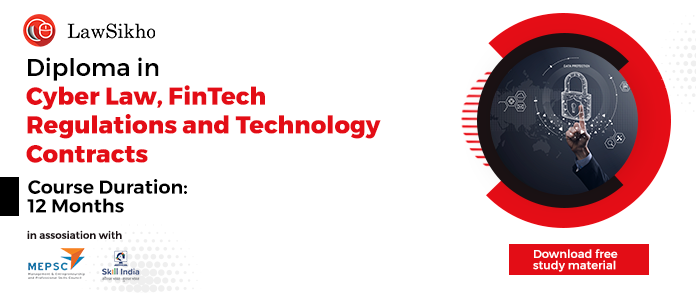This article is written by V. Nivetha, pursuing Certificate Course In Technology Contracts from LawSikho. The article has been edited by Prashant Bvaiskar (Associate, LawSikho) and Dipshi Swara (Senior Associate, LawSikho).
Table of Contents
Introduction
We live in an era where information is the coin of the realm. We are all very interested, a minimum of in theory, within the security, accuracy, and accessibility of data about ourselves. The newspapers are filled with articles during which the general public is telling pollsters that privacy may be a source of high anxiety, indeed one among the very top concerns during this new millennium.
Information security policies play a crucial role in achieving information security. Confidentiality, integrity, and availability are basic information security goals attained by enforcing appropriate security policies. Workflow Management Systems (WMS) also enjoy the inclusion of those policies to take care of the safety of business-critical data. Privacy is a crucial security requirement that concerns the topic of knowledge held by an organisation. WMS often process sensitive data about individuals and institutions who demand that their data is correctly protected, but WMS fail to recognise and enforce privacy policies. In this article, we illustrate existing WMS privacy weaknesses and introduce WMS extensions required to enforce data privacy.
What is risk management?
Risk management is the process of identifying, assessing and controlling threats to an organization’s capital and earnings. These threats, or risks, could stem from a good sort of sources, including financial uncertainty, legal liabilities, strategic management errors, accidents and natural disasters. IT security threats and data-related risks, and therefore the risk management strategies to alleviate them, became a top priority for digitized companies. Therefore, as a result of which, a risk management plan increasingly includes companies’ processes for identifying and controlling threats to its digital assets, including proprietary corporate data, a customer’s personally identifiable information (PII) and property.
What are the constituent steps for risk management?
1. Establishing the context.
2. Risk Identification.
3. Risk Analysis.
4. Risk Evaluation.
5. Risk Treatment.
6. Risk Communication and Consultation.
7. Risk Monitoring and review.
Data privacy workflow solutions
Data privacy workflow solutions are designed to assist the enforcement of regulatory compliance and protect your business from data leakage – but they shouldn’t be relied upon to enforce compliance in real-time.
The right to data privacy continues to be a hotly debated topic. This was highlighted in the recent launch of the California Consumer Privacy Act (CCPA) within the United States. Under which, organizations have had to re-think and re-architect how they manage, store and secure their customers’ personally identifiable information (PII), which incorporates not only names and ‘get in touch with’ details but financial and other sensitive information.
This will most aptly apply to their company websites too and is often a gold mine of valuable customer data. Website owners are forced to reevaluate their consent capture and tracking methods. This has never been more relevant than now with the introduction of the CCPA, giving consumers the right to request access to their data, request you delete their data or ask you to not sell their data.
There are multiple workflow solutions software available on the internet today.
Why workflow solutions are not enough?
As a result, many marketers are looking at Privacy Workflow solutions to assist the management of website visitors’ data preferences. Crucially, this is applicable to the ecosystem of third parties that organizations believe to enhance the functionality of their websites.
The problem is that when a customer requests to possess their data deleted, for instance under the CCPA legislation, the organization still must send that data out of the control of the website to 3rd parties so as to activate this request. From here it’s then up to the third party to suits the request as began by the privacy workflow vendor.
Not only are the privacy workflow providers taking the danger of sending a customer’s PII outside of their website, but they are also counting on that third party to suits the request began by the policies in situations, which isn’t guaranteed by any means. If a 3rd party of which there might be hundreds on one website alone – knowingly or unknowingly fails to suits the request, it’ll be your business that will be held in charge of breaking the law.

What is compliance risk?
Compliance risk, or regulatory risk, occurs when laws, rules, or regulations are violated, or when business standards, internal policies, or procedures don’t suit local, regional, national, or international regulatory guidelines.
Regulations are set by multiple entities across the world and may vary counting on which country or region a corporation is conducting business in. This presents two main challenges: staying compliant globally and therefore the potential for security threats if companies don’t adhere to regulations.
The following four regulations are set forth by different regulatory bodies across the world for various purposes, including the protection of monetary, personal, and healthcare data security information.
• PCI DSS (The Payment Card Industry Data Security Standard). this is often the knowledge security standard for organizations handling branded credit cards.
• GDPR (The General Data Protection Regulation). This legal framework sets guidelines for the gathering and processing of private information for those living within the European Union (EU).
• HIPAA (Health Insurance Portability and Accountability Act of 1996). This U.S. legislation provides data privacy and security to safeguard all medical information.
• OCC (The Office of the Comptroller of the Currency). This agency oversees the execution of laws for national banks, and functions to manage and supervise banks within us.
Consequences of non-compliance
There are several different kinds of data privacy risks at play with privacy workflows, with the 2 most serious risks being the danger of being found to be in breach of regulations and therefore the disastrous consequences of potential data leakage.
GDPR non-compliance could end in penalties of the maximum amount as €20 million or four per cent of your annual revenue, whichever is bigger. With the CCPA legislation, as of January 1, 2020, organizations can now be fined up to $2,500 for every negligent violation and up to $7,500 for every intentional violation. Moreover, individuals also can seek damages of between $100 and $750, and actions are often aggregated into a category action, leaving you hospitable the likelihood of enormous financial penalties.
In addition to this, the financial fallout in the event of knowledge leakage is often devastating. At a time when incidents of knowledge breaches have reached an all-time high, the typical cost of an event has increased to $3.92 million per breach, with lost business because of the biggest contributor. If a third party caused the info breach, the value increases by quite $370,000 for an adjusted average total cost of $4.29 million.
This is important to notice as third parties are increasingly liable for data breaches, within the US alone, 61 per cent of companies have experienced a knowledge breach caused by one among their vendors or third parties. Businesses also will need to affect reputational damage and loss of customer trust, which may be extremely harmful.
Solution
As we’ve seen, implementing a workflow solution by itself isn’t enough to make sure data privacy compliance is in line with the CCPA and GDPR legislation. The risks are too great to merely trust that your third-party vendors will suit your website visitors’ requests in which your customers’ data is safe when it leaves your website. Together with your business and your reputation in danger, it’s up to you to enforce your customers’ consent preferences in real-time to be truly compliant.
You must opt for something where the customer’s data remains within your Document Object Model (DOM) and no unauthorized third parties can access the said sensitive customer data. most significantly, this prevents the unauthorized collection of knowledge. Moreover, it is often used as a standalone solution or is integrated with your existing compliance privacy workflow vendor. Don’t be in the dark when it involves ensuring your customers’ data privacy.
Conclusion
Data privacy will become more important with time, following information security problems created by the pandemic, the rise of contact tracing has highlighted the necessity for people to ensure privacy in new ways. Institutions are working to uphold laws and regulations associated with data protection, but people are beginning to think more broadly than simple compliance, which specializes in the ethics of private data recording and processing. As we move forward, privacy must be included in plans for digital literacy, to assist students in better understand their rights and therefore the ways their data are getting used not only in education but in society at large. The more educated the population is, the better it’ll be to make sure that privacy is protected as a right and not merely available as a privilege.
The main focus for privacy in education must be the creation of privacy roles and staff positions and the expansion of assessments of both the internal and external collection and use of private data. Once an establishment can identify and explain how, why, and where personal data are being collected across the system, it can focus efforts on building trust with staff, faculty, and students through transparency, policy, and awareness campaigns.
Working to point out the worth of privacy to schools and staff will help reduce the perception of privacy as a roadblock or explanation for delays in our work and can help build an informed community at the institution. Each step of progress that’s taken and shared with other institutional members increases privacy awareness, helps increase the amount of individuals at the institution; incorporating privacy throughout their work, and moves the upper education community closer to a brighter way forward for privacy management.
Students of Lawsikho courses regularly produce writing assignments and work on practical exercises as a part of their coursework and develop themselves in real-life practical skills.
LawSikho has created a telegram group for exchanging legal knowledge, referrals, and various opportunities. You can click on this link and join:
https://t.me/joinchat/J_0YrBa4IBSHdpuTfQO_sA
Follow us on Instagram and subscribe to our YouTube channel for more amazing legal content.
 Serato DJ Crack 2025Serato DJ PRO Crack
Serato DJ Crack 2025Serato DJ PRO Crack










 Allow notifications
Allow notifications



